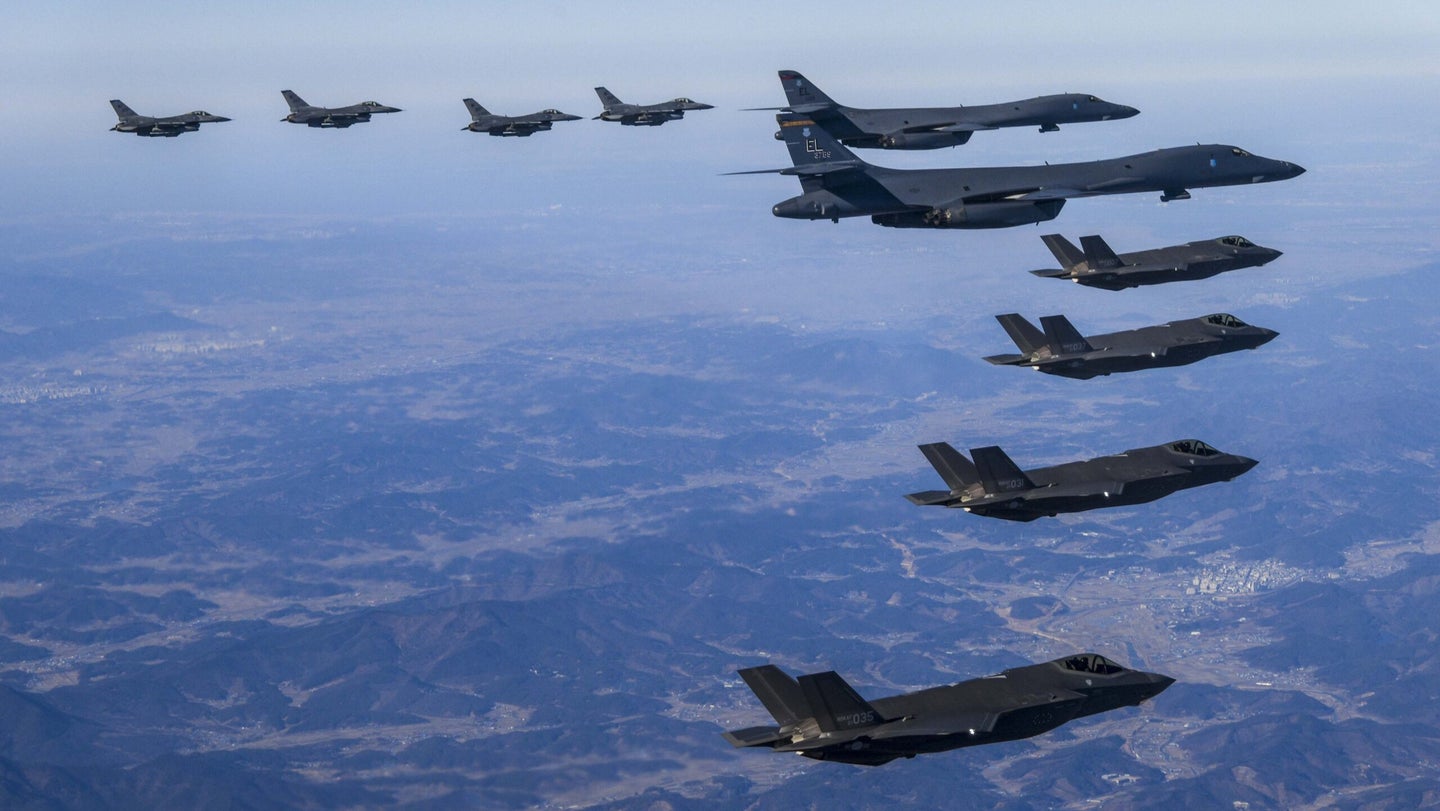American, Japanese and South Korean fighter jets escort bombers as North Korea stages more missile launches
The joint bilateral drills were planned for some time, but North Korea's launches were sudden.

North Korea spent much of this weekend launching missiles. On Saturday, the country fired one of its Hwasong-15 intercontinental ballistic missiles, which landed in the Sea of Japan, calling it a “surprise ICBM launching drill.” On Monday morning (local time) the country fired two more missiles into the Sea of Japan.
Amid all of this, American fighter jets and bombers flew in a pair of bilateral air exercises with fighters from South Korea and Japan, meant as a show of force in the region.
Subscribe to Task & Purpose Today. Get the latest military news, entertainment, and gear in your inbox daily.
Above the Korean Peninsula, American B-1B bombers and F-16s were joined by South Korean F-35As and F-15Ks. According to U.S. Forces Korea, the exercise was focused on training for “short-notice recall missions.”
“(The exercise) strengthened the combined operation capability and affirmed the United States’ ironclad commitment to the defence of the Korean Peninsula and the implementation of extended deterrence,” the South Korean military said in a statement.
It comes two weeks after a similar exercise over the peninsula, that one involving American F-22s, the first such joint air training operation between the two militaries this year.
The same day another American bomber took off, this time over the Sea of Japan. The B-1 bomber was accompanied by a contingent of American F-16 fighters and Japanese F-15s.
Although the bomber flights came soon after Pyongyang’s ICBM launch, the two exercises had been planned for some time. In fact, on Friday, North Korea promised a “unprecedentedly persistent, strong” response to the drills. A day after the joint operations, North Korea conducted its second launch, sending two ballistic missiles into the sea. The launches on Saturday and Monday are the first such since the start of the year, and are in violation of United Nations resolutions against the country testing ballistic missiles.
North Korean leader Kim Jong-un did not directly comment on the new launches Monday, but his sister, Kim Yo Jong, issued her own statement criticizing the build of American forces in the region.
“The frequency of using the Pacific as our firing range depends upon the U.S. forces’ action character,” she said in her statement.
The United States has been working to shore up and modernize defenses in East Asia. In November, the United States sent a B-1 bomber over the Korean Peninsula, the first such flight in five years. In Japan, the U.S. Air Force is in the process of replacing the aging F-15C and F-15D fighter contingent at Kadena Air Force Base in Okinawa with newer models. It’s not clear what those will be, although F-22s are filling in for the time being.
The latest on Task & Purpose
- Here’s why the Marine Corps strapped a rare electronic warfare LAV to the deck of a warship
- Shot fired after intruder breaks onto Andrews Air Force base
- That time a US Navy submarine got a confirmed kill on a train during WWII
- Coast Guardsman saves man hours before graduating from rescue swimmer school
- JTAC vs TACP: A user’s guide to the troops who call in close air support
Want to write for Task & Purpose? Click here.
